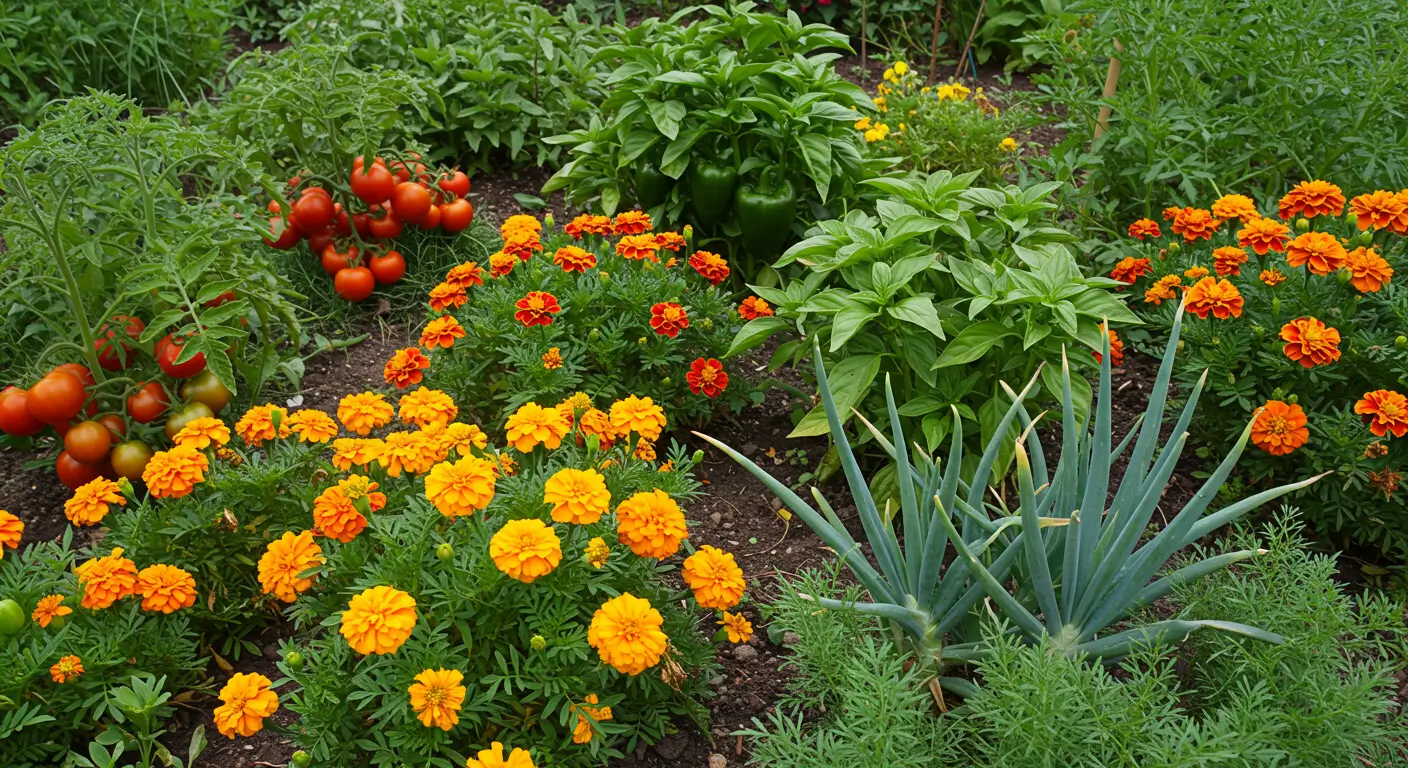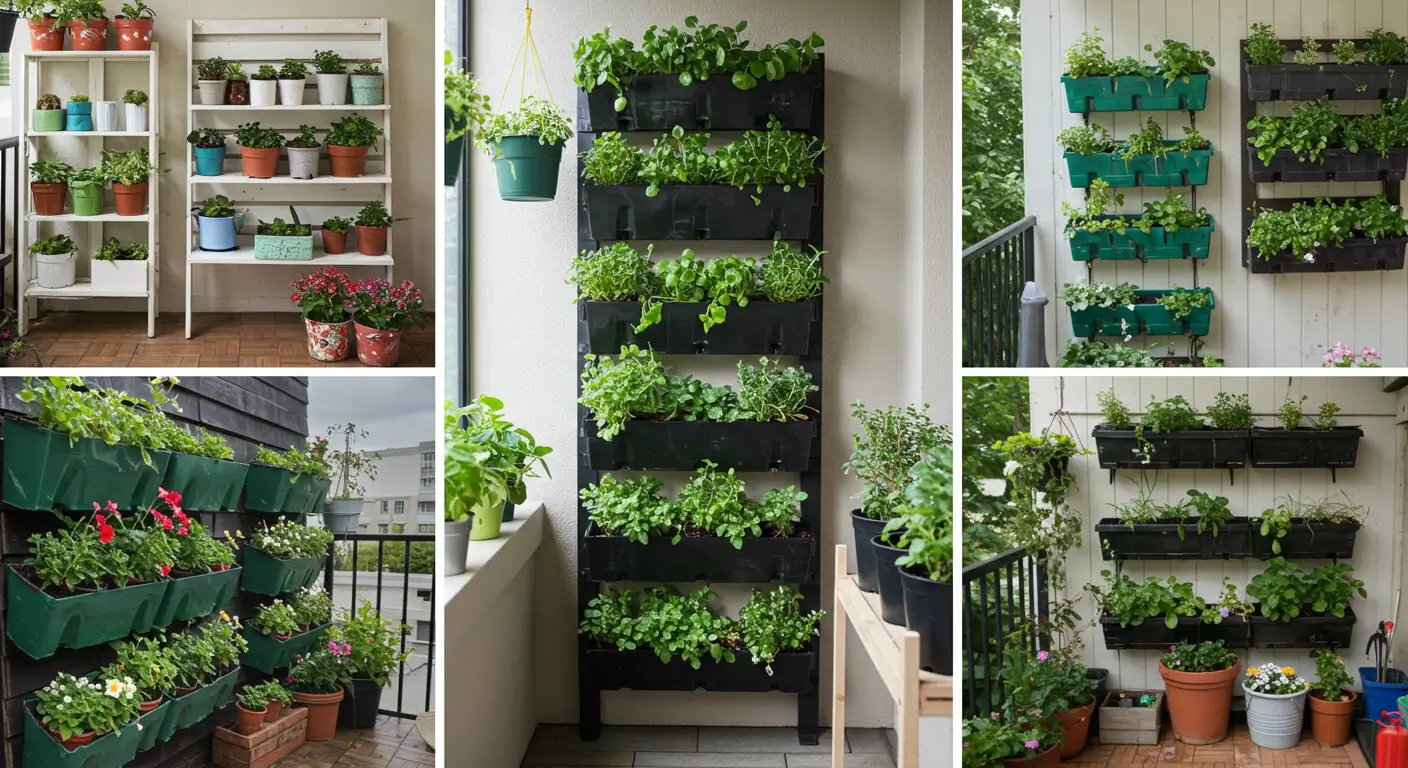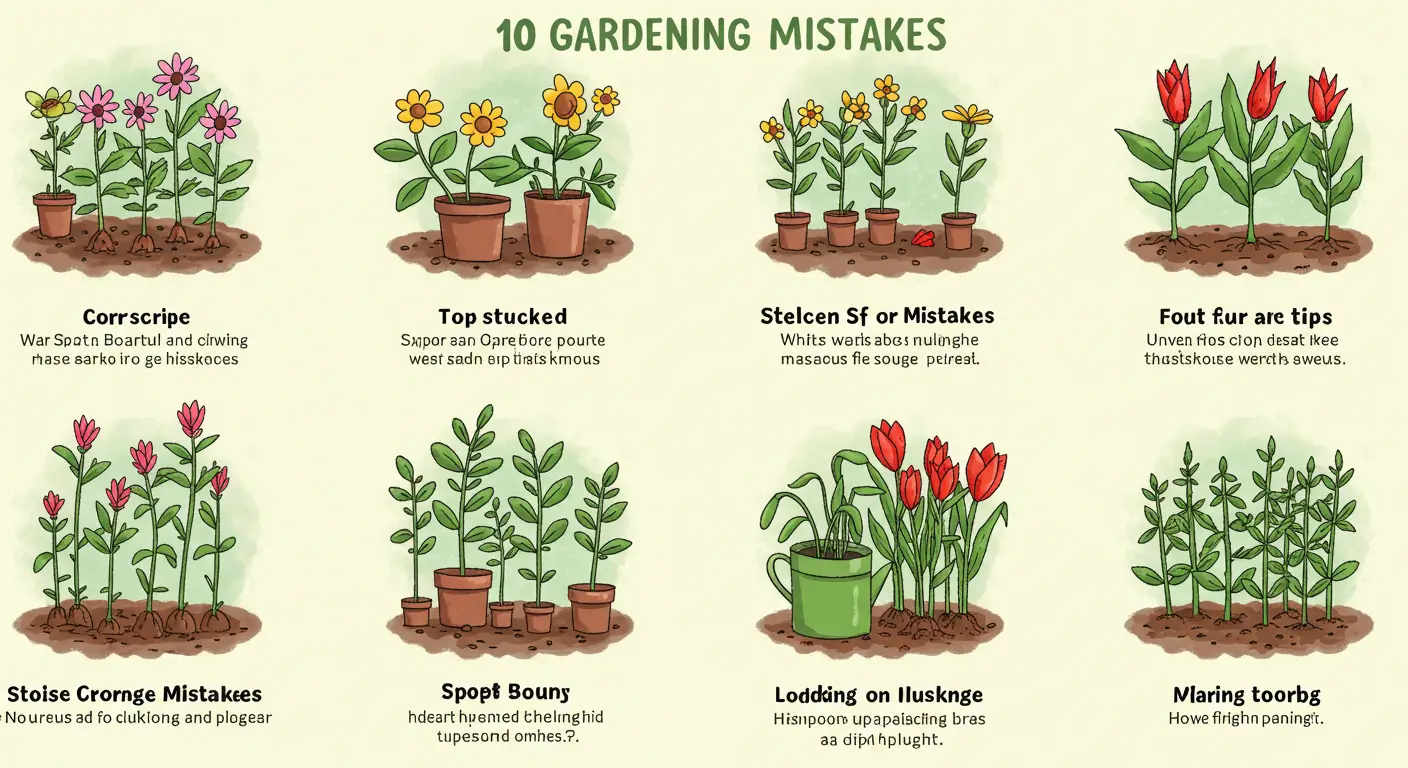A garden is more than just a collection of plants; it’s a sanctuary, a place for relaxation, contemplation, and enjoying the outdoors. Central to creating this atmosphere is the simple yet profound addition of seating, and few pieces are as iconic or versatile as **benches garden bench** options. These structures offer more than just a place to sit; they act as focal points, destinations within the landscape, and invitations to pause and appreciate the surroundings. Whether nestled under a favourite tree, commanding a view across the lawn, or gracing a patio space, the right **benches garden bench** transforms a simple garden into a usable, inviting outdoor room. Choosing the perfect one involves considering style, material, placement, and longevity, especially within the variable UK climate.
Garden benches bridge the gap between functional furniture and landscape design. They can complement the architectural style of your home, echo the theme of your planting scheme, or stand alone as a statement piece. From traditional wooden designs reminiscent of public parks to sleek, modern metal structures or rustic log seats, the variety available ensures there’s a bench to suit every taste and garden setting. Understanding the characteristics of different materials and styles is key to selecting a bench that not only looks good initially but also withstands the elements and provides comfort for years to come.
This comprehensive guide aims to help you navigate the diverse world of **benches garden bench** choices available. We will explore the reasons behind their enduring appeal, delve into the crucial factors to consider before purchase – including placement, size, and material properties – and examine popular styles. We’ll also provide practical advice on assembly, essential maintenance tailored to different materials (crucial for UK conditions), and ideas for accessorizing your bench to enhance both comfort and ambiance. Let’s find the perfect seat for your garden haven.
The Enduring Appeal of Benches & Garden Bench Seating
The presence of **benches garden bench** seating in outdoor spaces holds a timeless charm. They tap into a fundamental human desire to connect with nature while providing comfort and structure. Their enduring appeal stems from several key roles they play within a garden setting.

Creating a Focal Point and Destination
A well-placed garden bench naturally draws the eye, acting as a visual anchor within the landscape. It can break up large expanses of lawn, punctuate the end of a pathway, or highlight a particularly beautiful planting area. More than just an object to look at, it becomes a destination – a specific place within the garden you intentionally walk towards. This sense of purpose adds structure and flow to the garden’s design, encouraging exploration and interaction with different zones. A striking **benches garden bench** can elevate a simple view into an intentional composition.
Providing Rest and Contemplation
At its core, a bench is an invitation to pause. In the midst of gardening tasks or simply while enjoying the outdoors, a bench offers a welcome spot to rest tired legs, catch your breath, and simply *be* in the garden. It provides a comfortable vantage point for observing wildlife, watching the changing light, listening to birdsong, or quietly contemplating the beauty of the plants you’ve nurtured. This contemplative aspect is invaluable, transforming the garden from a space of activity into one of tranquility and reflection. The simple act of sitting on a **benches garden bench** encourages mindfulness and appreciation of the natural surroundings.
Enhancing Garden Aesthetics and Style
Garden benches are significant design elements that contribute strongly to the overall aesthetic of an outdoor space. The style of the bench – whether rustic wood, ornate iron, sleek metal, or classic stone – should ideally complement the garden’s theme and the architecture of the home. A Lutyens bench evokes classic formality, while a simple slatted wooden bench suits a cottage garden. Modern benches enhance contemporary landscapes. By choosing a **benches garden bench** that aligns with your desired style, you reinforce the overall design concept and create a more cohesive and visually appealing environment.
Functional Outdoor Seating Solution
Beyond aesthetics and contemplation, garden benches provide practical, durable outdoor seating. They offer a place for homeowners to relax, read, or enjoy a morning coffee. They provide seating for guests during garden parties or barbecues. Positioned near a play area, they give parents a comfortable spot to supervise children. Unlike lighter chairs that might need storing, a sturdy **benches garden bench** often remains outdoors year-round (depending on material), offering readily available seating whenever needed. They are a simple, robust solution for adding functional seating capacity to any garden.
Choosing Your Ideal Garden Bench: Key Considerations
Selecting the perfect **benches garden bench** requires more than just falling in love with a particular style. Practical considerations like placement, size, and material suitability are crucial for ensuring your chosen bench fits your space, meets your needs, and withstands the test of time, particularly in the often damp and variable UK climate.
Placement: Finding the Perfect Spot
Where you position your bench dramatically affects its usability and impact.
Sunny vs. Shady Locations:

Consider the time of day you are most likely to use the bench. A spot that catches the morning sun might be perfect for coffee, while a shady nook under a tree offers welcome respite on hot afternoons. Metal benches can become very hot in direct summer sun, making shade preferable, while wooden benches remain more temperature-neutral. Assess the sun’s path across your garden throughout the day and year.
Views and Vistas:

Place the bench where it offers the best possible view – overlooking a favourite flowerbed, across a pond, towards a distant landscape, or focused on a specific garden feature like a sculpture or water feature. Sit in potential locations to test the perspective. The view *from* the bench is paramount to its enjoyment.
Practicality (Near entrances, patios):
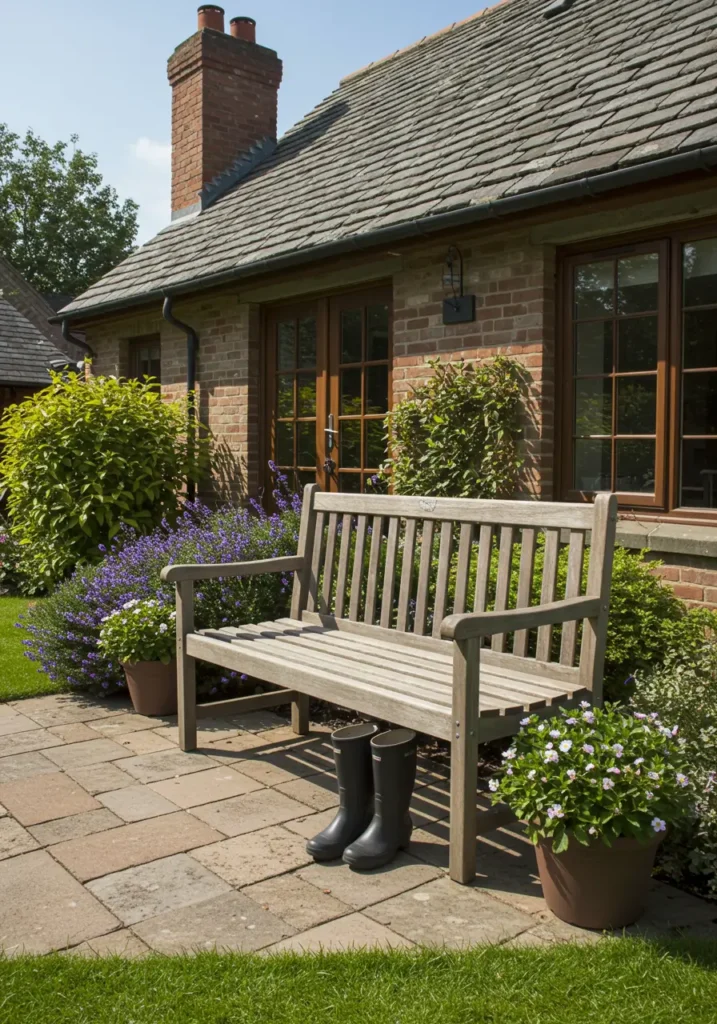
Positioning a bench near a house entrance can be convenient for pausing while putting on or taking off boots. Placing one on or adjacent to a patio extends the usable seating area for entertaining. Consider high-traffic routes – ensure the bench doesn’t obstruct pathways.
Ground Stability (Level surface):

The ground beneath the bench must be stable and reasonably level to prevent rocking or sinking. Paved surfaces, gravel pads, or well-compacted lawn areas are ideal. Placing a bench directly on soft soil or uneven lawn may require placing paving slabs under the feet for stability, especially for heavier **benches garden bench** models like stone or cast iron.
Size and Seating Capacity
The bench needs to fit the space physically and accommodate its intended users comfortably.
Standard Sizes (2-seater, 3-seater):

Garden benches are commonly available in standard sizes:
* *2-Seater:* Typically around 1.2m to 1.3m (approx. 4 feet) wide. Ideal for smaller spaces, patios, or creating intimate seating spots. Comfortably seats two adults.
* *3-Seater:* Usually around 1.5m to 1.8m (approx. 5-6 feet) wide. Offers more generous seating for two or comfortable space for three. Better suited to larger gardens or areas where more seating is desired.
* *Larger/Smaller Options:* 4-seater benches exist, as do smaller single “companion” seats or curved benches.
Measuring Your Space:
Before buying, measure the intended location accurately. Allow sufficient space not just for the bench itself, but also for comfortable access around it. Ensure there’s enough legroom in front and clearance behind or beside it. A bench that looks appropriately sized online can feel overwhelming or cramped once placed in situ.

Considering User Comfort:
Think about seat depth and back height/angle. Deeper seats can be more relaxing. A slightly angled back is generally more comfortable than a completely vertical one. Armrests add comfort and make getting up easier for some individuals. Trying out different **benches garden bench** styles in person can help gauge comfort levels.
Material Matters: Pros and Cons
The material dictates the bench’s appearance, weight, durability, maintenance needs, and cost.

Wooden Benches:
* *Pros:* Natural beauty, blends well with garden settings, relatively comfortable temperature-wise, wide range of styles and wood types (hardwood, softwood). Can be painted or stained.
* *Cons:* Requires maintenance (cleaning, treating) to prevent rot, weathering, and splitting (especially softwoods). Can be heavy (hardwoods). Lifespan varies greatly with wood type and upkeep.
* *Examples:* Teak, Oak (hardwoods); Pine, Spruce (softwoods).
Metal Benches:
* *Pros:* Durable and strong, intricate designs possible (especially cast iron/aluminium), relatively weather-resistant (aluminium is rust-proof). Can last many years.
* *Cons:* Can get very hot in sun/cold in winter (cushions often needed for comfort), susceptible to rust (iron/steel require protection), can be very heavy (cast iron), potential for higher cost.
* *Examples:* Wrought Iron, Cast Iron, Cast Aluminium, Powder-coated Steel.
Stone Benches:
* *Pros:* Extremely durable and long-lasting, classic and formal appearance, requires minimal maintenance (occasional cleaning), very stable.
* *Cons:* Very heavy and difficult to move, surface can be cold and hard (needs cushions), can be expensive, susceptible to staining or moss/algae growth in damp shade (requires cleaning).
* *Examples:* Natural Granite, Sandstone, Reconstituted Stone, Concrete.
Resin/Plastic Benches:
* *Pros:* Lightweight, affordable, completely weatherproof (won’t rot or rust), easy to clean, available in various colours and styles (some mimicking wood/metal). Often made from recycled materials.
* *Cons:* Can look less premium than natural materials, may fade or become brittle over time with UV exposure (quality varies), lightweight nature can make them feel less stable or prone to blowing over in strong winds.
Rattan/Wicker Benches:
* *Pros:* Lightweight, comfortable (often includes cushions), stylish relaxed look (popular for patio/conservatory settings). Synthetic rattan offers excellent weather resistance.
* *Cons:* Natural rattan is not suitable for leaving outdoors year-round in the UK climate (needs protection/storage). Synthetic rattan is durable but quality varies. Can be more expensive than basic wood or plastic. Frame underneath is usually metal (check material – aluminium best).
Choosing the right material for your **benches garden bench** involves weighing these factors against your budget, desired aesthetic, and willingness to perform maintenance.
Exploring Popular Garden Bench Styles
Beyond materials, the design style of **benches garden bench** options contributes significantly to their character and suitability for different garden themes. From timeless classics to contemporary statements, there’s a style to match every taste.
Classic Park Bench Style

Description:
This broad category evokes traditional public park seating. Key features often include slatted seats and backs (wood or metal), sturdy legs (often cast iron ends supporting wooden slats, or entirely metal), and comfortable armrests. They possess a timeless, functional appeal.
Variations:
* *Lutyens Bench:* A specific, iconic design by Sir Edwin Lutyens, characterized by its scrolling, C-shaped armrests and often an arched back. Elegant and formal, typically made from teak or other hardwoods.
* *Traditional Slatted Bench:* Simple horizontal slats for seat and back, often with cast iron decorative end frames featuring motifs like foliage or geometric patterns. A quintessential Victorian/Edwardian park look.
* *Memorial Bench Style:* Often simple, sturdy wooden benches, sometimes with engraved plaques. Designed for durability and comfort.
Suitability:
Fits well in traditional, formal, cottage, and country gardens. The Lutyens bench is a statement piece for elegant settings. Standard park benches are versatile and robust choices.
Rustic and Naturalistic Designs
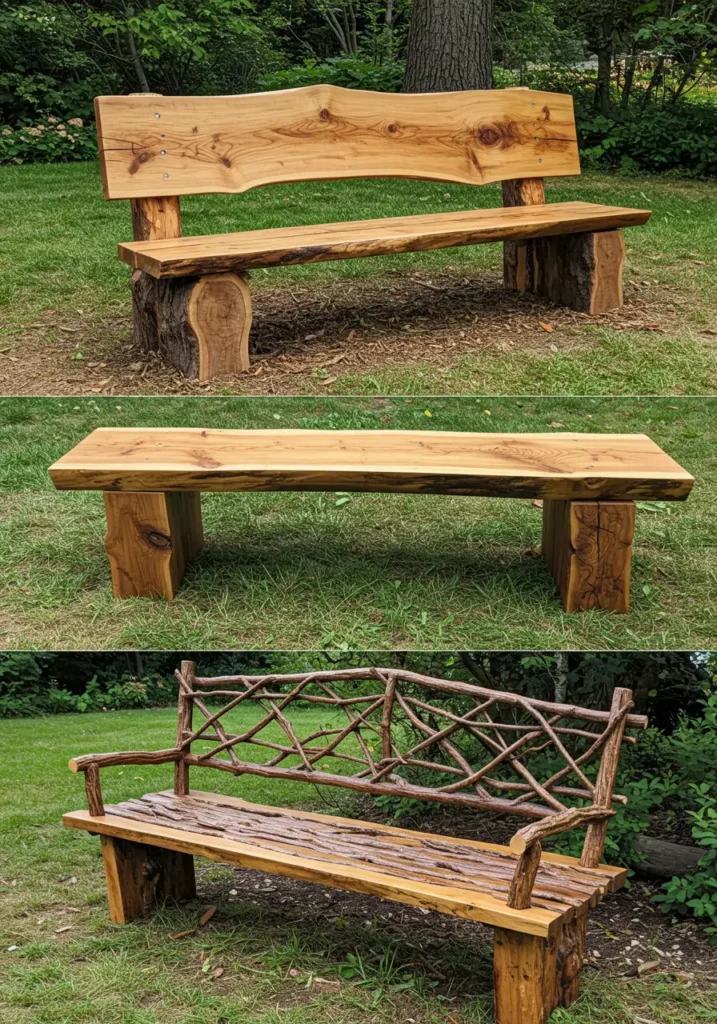
Description:
These benches emphasize natural materials and often retain some of the wood’s original character. They aim for an organic, less formal look, blending seamlessly into woodland or cottage garden settings.
Variations:
* *Log Benches:* Made from whole or split logs, often chunky and substantial. Can be simple backless designs or have backs constructed from smaller logs or planks.
* *Live Edge Benches:* Feature planks where the natural edge of the wood is left intact, showcasing the tree’s original shape. Creates a unique, organic feel.
* *Twig/Branch Benches:* Constructed using smaller branches, often with intricate woven patterns. More delicate and often suited for sheltered spots.
Suitability:
Perfect for informal gardens, woodland areas, wildlife gardens, or spaces aiming for a handcrafted, natural aesthetic. These **benches garden bench** styles emphasize connection to nature.
Modern and Contemporary Benches

Description:
Characterized by clean lines, minimalist forms, and often utilizing materials like metal (stainless steel, powder-coated aluminium), smooth concrete, or sleek hardwoods. Focus is on form, function, and uncluttered aesthetics.
Variations:
* *Minimalist Slatted Benches:* Simple horizontal slats (wood or metal) with clean, unadorned frames.
* *Sculptural Benches:* Designed as functional art pieces, often with unique shapes, curves, or material combinations.
* *Concrete Benches:* Simple geometric forms (rectangles, cubes) made from polished or textured concrete. Offer an industrial or brutalist edge.
* *Backless Designs:* Very common in modern styles, emphasizing horizontal lines and openness.
Suitability:
Ideal for contemporary garden designs, urban spaces, minimalist landscapes, and patios complementing modern architecture.
Romantic and Ornate Styles

Description:
These benches often feature curves, decorative scrolls, and intricate details, typically crafted from metal (wrought iron, cast aluminium). They evoke a sense of nostalgia, elegance, and romance.
Variations:
* *Wirework Benches:* Delicate designs using bent and scrolled metal wire, often painted white or cream. Evokes Victorian or French country style.
* *Cast Aluminium/Iron with Motifs:* Feature elaborate castings of leaves, flowers, grapes, or other decorative patterns within the backrest and legs.
* *Curved Benches:* Designed to wrap around a tree trunk or fit into a curved space, adding a soft, flowing line.
Suitability:
Perfect for cottage gardens, rose gardens, formal romantic gardens, or as a charming feature in a secluded nook. These decorative **benches garden bench** types add character.
Benches with Integrated Storage
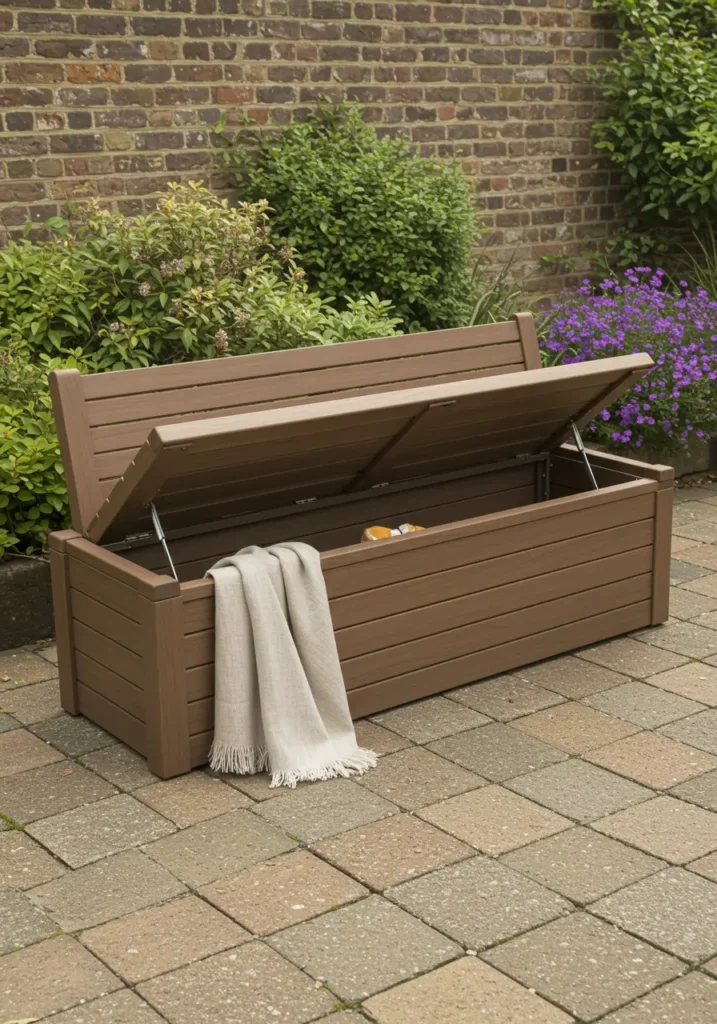
Description:
Combining seating with practicality, these benches feature a hinged seat that lifts to reveal a storage compartment underneath. Usually made from wood or weather-resistant resin.
Functionality:
Ideal for storing garden tools, cushions, children’s toys, or other outdoor items, keeping the garden tidy. Particularly useful on patios or balconies where space is limited.
Considerations:
Ensure the storage compartment is weather-resistant (though perhaps not fully waterproof unless specified) and has adequate ventilation to prevent mustiness. Check the ease of opening and closing the lid.
Companion Seats / Tête-à-Tête Benches
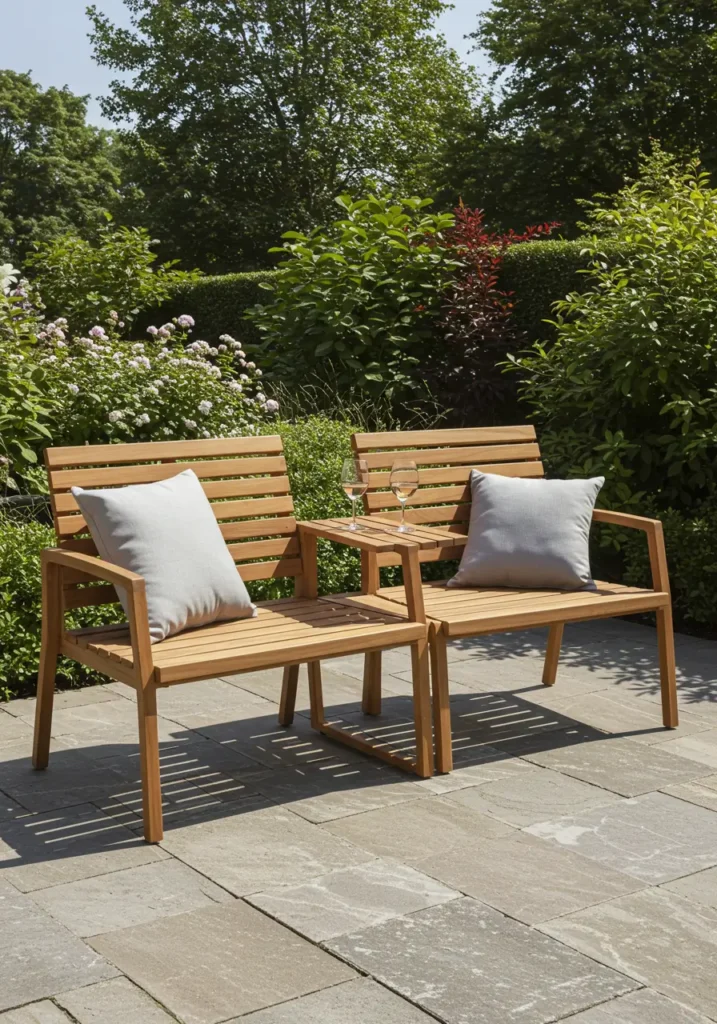
Description:
Designed for two people, these seats are typically joined in the middle by a small table or shared armrest, often angled slightly towards each other to facilitate conversation.
Purpose:
Creates an intimate seating arrangement perfect for couples or close friends to share a drink or chat. Often made from wood or metal.
Placement:
Works well on patios, balconies, or in garden corners where a cozy, conversational spot is desired.
Backless Benches

Description:
Simple benches without a backrest, consisting of a seat and legs. Can be made from any material (wood, stone, metal, concrete).
Advantages:
Offers versatility in seating direction (can be approached from either side), visually less obtrusive, often used in modern designs or informal settings. Can double as low tables sometimes.
Disadvantages:
Less comfortable for prolonged sitting compared to benches with back support. Provides no backrest to lean against.
Choosing a style that resonates with your garden’s theme and your personal taste ensures your **benches garden bench** becomes a harmonious and cherished part of your outdoor space.
Also Read: DIY Vertical Garden Ideas for Small Spaces
Material Deep Dive: Choosing the Best Fit for UK Weather
The UK climate, known for its dampness, fluctuating temperatures, and potential for frost, places specific demands on outdoor furniture. Choosing a **benches garden bench** material that can withstand these conditions is crucial for ensuring longevity and minimizing maintenance headaches.
Wooden Benches: Understanding Treatments and Durability
Wood offers natural beauty but requires careful selection and care in the UK.
Teak: The Gold Standard
* *Properties:* A tropical hardwood naturally rich in oils and silica, making it extremely resistant to rot, water damage, and insect attack. Very dense and durable.
* *Maintenance:* Can be left untreated to weather naturally to a silvery-grey patina (this doesn’t affect structural integrity). Alternatively, teak oil can be applied periodically (once or twice a year) to maintain its original golden-brown colour. Requires minimal cleaning.
* *Lifespan:* Can easily last 20-30 years or more, even left untreated.
* *Cost:* The most expensive wood option, but its longevity offers excellent long-term value. Ensure it’s sourced from reputable, sustainable plantations (look for FSC certification).
Oak: Strong and Traditional
* *Properties:* A very strong, dense, durable European hardwood with good natural resistance to rot and insects due to tannins. Offers a traditional, sturdy appearance.
* *Maintenance:* Benefits from treatment (oiling, sealing, or painting) to prevent surface checking (small cracks) and discolouration and maximise lifespan. Requires regular cleaning and re-treatment every few years.
* *Lifespan:* Can last 15-25 years with proper care.
* *Cost:* Less expensive than teak but still a premium hardwood option.
Pine/Softwoods (Pressure Treated):
* *Properties:* Includes woods like Pine, Spruce, Fir. Naturally much less resistant to rot and insects than hardwoods. Almost always requires pressure treatment for outdoor durability in the UK.
* *Maintenance:* Pressure treatment protects against rot and insects, but the wood still benefits from annual cleaning and the application of a water sealant or paint/stain to prevent weathering (greying, cracking). Untreated softwood benches will have a very short lifespan outdoors.
* *Lifespan:* Pressure-treated softwood can last 7-15 years, depending on the quality of treatment and ongoing care.
* *Cost:* The most budget-friendly wood option.
FSC Certification Importance:
Regardless of wood type, look for the Forest Stewardship Council (FSC) logo. This ensures the wood comes from responsibly managed forests, promoting sustainable forestry practices – crucial for environmental consciousness when choosing wooden **benches garden bench** models.
Metal Benches: Combating Rust and Ensuring Comfort
Metal offers durability but requires specific considerations for rust prevention and comfort.
Cast Iron/Wrought Iron:
* *Properties:* Extremely heavy, strong, stable, allows for ornate traditional designs. Wrought iron (hammered) is less brittle than cast iron (poured into molds).
* *Maintenance:* Highly susceptible to rust if protective coatings (paint, powder coat) are breached. Requires regular inspection for chips or scratches in the finish, which must be touched up immediately with appropriate metal paint (like Hammerite) to prevent rust spreading. May need periodic full repainting.
* *Comfort:* Conducts heat and cold readily; cushions are essential for comfortable seating.
Aluminium (Cast/Extruded):
* *Properties:* Lightweight yet strong, completely rust-proof (making it ideal for the UK climate). Cast aluminium allows for intricate designs similar to cast iron but without the weight or rust issues. Extruded aluminium is used for simpler, often modern, frames.
* *Maintenance:* Very low maintenance. Usually powder-coated for colour and added protection. Simply requires cleaning. Powder coating is durable but can be scratched; touch-up paint is available.
* *Comfort:* Still conducts temperature, so cushions enhance comfort. Often a preferred metal for **benches garden bench** longevity.
Steel:
* *Properties:* Very strong and durable, often used for modern designs or robust park-style benches. Less expensive than aluminium.
* *Maintenance:* Prone to rust unless well protected. Look for galvanized steel (zinc coating for rust protection) or, more commonly, a high-quality powder-coated finish. Like iron, any chips or scratches need immediate attention to prevent rust.
* *Comfort:* Conducts temperature; cushions recommended.
Low-Maintenance Options: Stone and Resin
For those seeking minimal upkeep.
Stone:
* *Properties:* Unmatched durability, impervious to rot and rust. Weathers naturally over time.
* *Maintenance:* Requires only occasional cleaning to remove algae, moss, or bird droppings, typically with a stiff brush and water (or specialized stone cleaner). Very little upkeep needed.
* *Climate Suitability:* Excellent for UK weather, unaffected by damp or frost (if good quality stone/concrete). Remains cold to sit on.
Resin/Plastic:
* *Properties:* Completely weatherproof, won’t rot, rust, or splinter. Lightweight and easy to move.
* *Maintenance:* Simple cleaning with soap and water is usually all that’s required.
* *Climate Suitability:* Excellent resistance to rain and damp. However, UV resistance varies – cheaper plastics may fade or become brittle over several years of sun exposure. Look for UV-stabilized resins for better longevity. Can be blown about in strong winds if not weighted or secured. An affordable, practical choice among **benches garden bench** materials.
Assembling and Installing Your Garden Bench
Most **benches garden bench** models, unless purchased fully assembled or made from single pieces like stone, will require some assembly. Proper assembly is key to the bench’s stability, safety, and longevity.
Checking Components and Instructions
Before you begin, unpack everything carefully.
Inventory Check:
Lay out all the parts and compare them against the parts list provided in the instructions. Ensure all pieces are present and undamaged. Check that all necessary hardware (bolts, screws, nuts, washers) is included. Contact the retailer immediately if anything is missing or broken.
Read Instructions Thoroughly:
Read through the entire assembly manual before starting. Familiarize yourself with the steps, the orientation of parts, and the types of hardware used for each connection. Diagrams are usually key – study them closely.
Tools Required for Assembly
Gather the necessary tools beforehand.
Common Tools:
Instructions will specify required tools, but common ones include:
* Screwdrivers (Phillips head and/or flathead)
* Spanners or an adjustable wrench (for nuts and bolts)
* Socket set (sometimes easier than spanners)
* Allen keys (often included if needed)
* Rubber mallet (for gently tapping parts into place without damage)
* Level (useful for ensuring level assembly and placement)
Work Area:
Assemble the bench on a flat, clean surface, ideally near its final location to minimize moving the assembled piece. A blanket or cardboard can protect both the bench finish and your floor/patio during assembly.
Step-by-Step Assembly Tips
Work methodically for best results.
Follow the Order:
Assemble components in the sequence outlined in the instructions. Skipping steps or changing the order can lead to difficulties later.
Hand-Tighten First:
Initially, insert bolts or screws and tighten them only by hand or very loosely with tools. This allows for slight adjustments and ensures all parts align correctly before final tightening.
Check Alignment and Level:
As you connect major components (legs, seat, back), check that parts are correctly aligned and square. Use a level on the seat surface during assembly if possible.
Final Tightening:
Once all parts are loosely assembled and correctly aligned, go back and tighten all hardware securely. Be careful not to overtighten, which could strip screw heads, crack wood, or damage threads. Tighten bolts evenly, alternating between opposite sides where applicable.
Assistance Needed?:
Some larger or heavier **benches garden bench** models may be easier to assemble with two people, especially when lifting or holding larger sections in place.
Ensuring Stability on Uneven Ground
A wobbly bench is uncomfortable and potentially unsafe.
Level Placement Surface:
The best solution is to place the bench on a firm, level surface like a patio, deck, or prepared gravel pad.
Shimming:
If placing on slightly uneven lawn or ground, identify which leg(s) are not making firm contact. Use small, weather-resistant shims (thin pieces of plastic, slate, or treated wood) placed under the shorter leg(s) to level the bench and eliminate wobble.
Paving Slabs:
For placement on softer ground, sinking small, level paving slabs under each foot of the bench provides a stable and durable foundation, preventing the legs from sinking into the soil over time.
Anchoring Options (If necessary for security/stability)
In some situations, securing the bench may be advisable.
Public or Unsecured Areas:
If the bench is in a front garden or public-access area, consider anchoring it to prevent theft. Many metal or wooden benches have pre-drilled holes in the feet for this purpose. Use appropriate ground anchors or bolt into paving.
High Wind Areas:
Lightweight benches (especially resin) in exposed locations might benefit from anchoring or weighting down to prevent being blown over during storms.
Stability Concerns:
If a bench feels top-heavy or unstable even when level (less common with quality designs), anchoring can provide additional peace of mind, especially if used by children or elderly individuals. Proper assembly of your **benches garden bench** ensures safety and enjoyment.
Maintaining Your Benches & Garden Bench for Longevity
Proper maintenance is key to preserving the appearance and structural integrity of your **benches garden bench**, ensuring it provides enjoyment for many years, particularly given the challenges of the UK weather. Maintenance routines vary significantly depending on the material.
Regular Cleaning (General Dirt, Bird Droppings, Algae)
Basic cleaning applies to almost all bench types.
Frequency:
Clean your bench as needed – typically once or twice a year (spring and autumn) or whenever it looks dirty. More frequent cleaning may be needed under trees (bird droppings, sap) or in damp, shady spots prone to algae/moss.
General Method:
Start by brushing off loose debris. Wash the bench using a bucket of warm water mixed with a mild detergent (washing-up liquid is often fine). Use a soft cloth or sponge for smooth surfaces and a soft-bristled brush for textured areas or ingrained dirt. Avoid harsh abrasive cleaners or stiff wire brushes that could scratch finishes. Rinse thoroughly with clean water and allow to air dry completely.
Dealing with Algae/Moss:
For green algae or moss, especially on wood or stone in damp areas, use a specialized patio cleaner or a diluted bleach solution (test on an inconspicuous area first, use with caution, rinse thoroughly, and protect surrounding plants). Pressure washers can be used carefully on stone or concrete, but use a low setting and wide nozzle, as high pressure can damage wood grain or painted finishes.
Protecting Wooden Benches (Oiling, Sealing, Painting)
Wood requires the most proactive maintenance.
Teak Maintenance:
As mentioned, teak can be left to weather grey or oiled annually/biannually with teak oil to maintain colour. Clean thoroughly before oiling.
Hardwood Maintenance (Oak etc.):
Clean annually. Apply a suitable hardwood garden furniture oil or sealant every 1-2 years (following product instructions) to replenish natural oils, maintain colour, and prevent water penetration/checking. Light sanding may be needed first if the surface is rough.
Softwood Maintenance (Treated Pine etc.):
Clean annually. Needs regular re-treatment for maximum lifespan. Apply a good quality exterior wood stain, paint, or water sealant every 1-3 years, depending on exposure and product type. Ensure the wood is completely dry before treating. Painting offers the most protection but requires more prep work (sanding, priming) if the previous coat is failing. Re-treating your wooden **benches garden bench** is vital in the UK.
Protecting Metal Benches (Touching up paint, Rust treatment)
Preventing and treating rust is key for iron and steel.
Inspection:
Regularly inspect painted or powder-coated iron/steel benches for any chips, scratches, or blisters in the finish, especially around joints and feet where moisture collects.
Touch-ups:
If damage is found, act quickly. Gently sand the affected area to remove any loose paint and surface rust. Apply a suitable metal primer, followed by touch-up paint matching the original colour (Hammerite or similar direct-to-rust paints can simplify this). This seals the metal and stops rust from spreading.
Aluminium Care:
Requires only cleaning. If powder coating gets deeply scratched exposing bare aluminium, it won’t rust, but touch-up paint can be used for cosmetic reasons.
Winter Care and Storage
Protecting your bench during harsh winter weather extends its life.
Material Suitability:
Stone and high-quality cast aluminium benches can generally be left outdoors year-round with minimal issue. Cast iron/steel are also robust but ensuring the coating is intact before winter is crucial to prevent rust accelerating in damp conditions. Resin can become brittle in extreme cold. Natural rattan MUST be stored indoors. Treated softwood and less durable hardwoods benefit significantly from protection. Teak is durable enough but covering maintains its appearance longer.
Covering:
If leaving outdoors, use a breathable, weather-resistant garden furniture cover specifically designed for benches. Ensure the cover fits well but allows some air circulation to prevent condensation buildup, which can encourage mold or rot on wood. Tie covers down securely against wind. Avoid letting covers sit directly on wooden surfaces for long periods if possible (use small blocks to create an air gap).
Storing Indoors:
The best protection, especially for valuable wooden benches or natural rattan, is to store them in a dry, sheltered place like a garage or shed over winter. Clean and ensure the bench is completely dry before storing.
Preparation Before Covering/Storing:
Always clean the bench thoroughly and ensure it is completely dry before covering or storing for winter. This prevents trapping dirt and moisture, which can cause damage over the storage period. Careful maintenance ensures your **benches garden bench** lasts.
Accessorizing Your Garden Bench
While beautiful and functional on its own, accessorizing your **benches garden bench** can elevate comfort, enhance style, and integrate it more fully into your garden’s ambiance.
Cushions and Pads for Comfort and Style
Enhanced Comfort:
Especially important for metal and stone benches, which can be hard and cold/hot. Cushions provide softness and insulation, making the bench much more inviting for longer periods of sitting. Even wooden benches benefit from added comfort.
Adding Colour and Pattern:
Cushions are an easy way to inject colour, pattern, and personality. Choose colours that complement your planting scheme, outdoor decor, or the bench material itself. Changeable covers allow you to update the look seasonally.
Material Choice:
Select cushions made from weather-resistant outdoor fabrics (e.g., solution-dyed acrylic, polyester) that resist fading, moisture, and mildew. Look for removable, washable covers. Store cushions indoors when not in use or during wet weather to prolong their life, even if fabric is weather-resistant. Ensure pads have ties or non-slip backing to keep them securely in place on the **benches garden bench**.
Outdoor Throws for Cooler Evenings
Extending Usability:
A soft throw blanket kept nearby allows you to enjoy your garden bench on cooler spring or autumn evenings, or after the sun goes down in summer.
Adding Texture and Coziness:
Throws add a layer of texture and visual warmth, making the seating area feel more inviting and comfortable. Choose materials suitable for outdoor use or be prepared to bring them indoors regularly.
Nearby Plantings to Enhance the Setting
Integrating the bench with surrounding plants softens its edges and creates a cohesive look.
Framing the Bench:
Plant taller shrubs or ornamental grasses behind the bench to create a backdrop. Use pots or containers with colourful flowers or foliage placed beside the bench. Allow gentle groundcovers or trailing plants to spill near its feet (but avoid obstructing access).
Fragrant Plants:
Consider planting fragrant flowers (like roses, lavender, jasmine) or herbs nearby so their scent can be enjoyed while sitting on the bench.
Side Tables for Drinks or Books
Adding Convenience:
A small, weather-resistant side table placed next to the bench provides a convenient spot for placing drinks, snacks, books, or a small lantern. This enhances the bench’s functionality as a relaxation spot. Choose a table style and material that complements the **benches garden bench**.
Outdoor Lighting for Evening Ambiance
Extending Enjoyment:
Subtle outdoor lighting allows the bench area to be enjoyed after dark. Consider solar stake lights along a nearby path, lanterns placed on a side table or hung from a nearby tree branch, or strategically placed uplighters highlighting nearby plants. This creates a magical atmosphere for evening relaxation.
Thoughtful accessories transform a simple **benches garden bench** from mere seating into a truly comfortable, functional, and atmospheric garden feature.
Creating Your Garden Haven: The Value of a Well-Chosen Bench
A **benches garden bench** is more than just outdoor furniture; it’s an investment in the enjoyment and usability of your garden space. It provides a destination, encourages moments of pause and reflection, enhances the visual landscape, and offers practical seating. By carefully considering placement, size, material suitability for the UK climate, and a style that resonates with your garden’s character, you can select a bench that becomes a cherished feature for years to come.
Remember that proper assembly and ongoing maintenance, tailored to the specific material of your **benches garden bench**, are crucial for ensuring its longevity and preserving its beauty. Whether you opt for the timeless warmth of teak, the ornate durability of cast aluminium, the rustic charm of logs, or the low-maintenance ease of resin, caring for your choice protects your investment. Accessorizing with cushions, throws, and thoughtful surrounding elements further elevates the comfort and ambiance, transforming your bench into a truly personal garden retreat.
Ultimately, the perfect garden bench is one that invites you to sit, relax, and connect with the natural beauty surrounding you. It becomes part of the garden’s story, holding memories of quiet mornings, shared conversations, and peaceful afternoons. Choose thoughtfully, care diligently, and your **benches garden bench** will undoubtedly become one of the most rewarding additions to your outdoor haven.
Frequently Asked Questions
1. What is the most durable material for a garden bench in the UK climate?
Hardwoods like Teak offer exceptional natural durability against rot and moisture. Cast aluminium is also extremely durable as it doesn’t rust. High-quality stone/concrete benches are virtually permanent. While treated softwoods, protected iron/steel, and quality resin can last many years with proper care, teak and aluminium generally require the least structural maintenance related to weather degradation itself.
2. How often do I need to treat a wooden garden bench?
This depends heavily on the wood type and the product used. Teak can be left untreated or oiled 1-2 times a year to maintain colour. Other hardwoods like oak benefit from oiling or sealing every 1-2 years. Pressure-treated softwood should ideally receive a protective topcoat (sealant, stain, paint) every 1-3 years to prevent weathering and maximize its lifespan. Always follow the manufacturer’s recommendations for specific treatments.
3. Can I leave my garden bench cushions outside all summer?
Even cushions made with weather-resistant outdoor fabrics will last longer and stay cleaner if stored indoors or in a waterproof storage box during heavy rain or overnight. While designed to withstand sun and occasional showers, prolonged exposure to moisture can still lead to mildew, and constant UV exposure will eventually cause fading, regardless of fabric quality.
4. My metal garden bench has started to rust slightly. What should I do?
Act quickly. Use a wire brush or sandpaper to remove all loose rust and any flaking paint from the affected area, sanding back to clean metal if possible. Wipe the area clean and dry it thoroughly. Apply a metal primer suitable for rusted surfaces, allow it to dry, then apply one or two coats of exterior metal paint (like Hammerite or a similar brand) matching the bench colour, ensuring the repaired area is completely sealed.
5. What’s the best way to secure a lightweight garden bench in a windy location?
For lightweight resin or aluminium benches in exposed areas, consider securing them. Some benches have pre-drilled holes in the feet allowing them to be bolted to paving slabs or decking. Alternatively, you can use ground anchors (metal stakes or screws designed for outdoor furniture) driven into the lawn or soil and attached to the bench legs. Discreetly placing heavy planters near the bench legs can also add some weight and stability.
